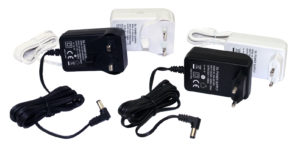
5 Things To Consider Before You Choose Guest Phones For Your Hotel
Your hotel needs a substantial telecoms infrastructure including phones for reception and back office, often a multi-cell DECT cordless backbone for staff to remain connected throughout the property, an interface into billing systems and more. Yet perhaps the most unique part of a hospitality solution is often the most overlooked by telecoms service providers: the guest phone. In their business they probably spend most of their time selling services to offices and factories, so they will be most familiar with phones that work with a headset or handle incoming call queues and the like.
Nevertheless, the guest phone is the only part of the telecommunication infrastructure that we really get to look at and touch when we stay in a hotel, so selecting the right phone for the setting can really enhance the guest’s stay and hoteliers can help by setting out their requirements carefully. Here are a few things to think about when you are making your choice.
Where will the phone(s) be located?
Most guest rooms only have a single telephone, and it will most likely be located on the desk, or on the “nightstand” next to the bed. It’s worth checking on this, as nightstands don’t leave much space for a phone, so a model with a small footprint will be preferred.
In upscale hotels, premium rooms and suites will often have 2, and sometimes even 3 or 4 phones. The hotelier may consider putting a master phone on the desk, one next to the bed, one in the bathroom and, in the case of a suite, yet another in the living area. Remember that the bathroom phone will need to be wall-mounted.
Some of VTech Hospitality’s guest room phones, like the VTech S2411, come with a cordless handset to allow the guest the freedom to walk around the room while on the phone and also act as a cordless base station which can power those additional phones in the room. Take a look at the VTech S241SDU as an option for the nightstand and the VTech S2310 which can be fixed to the wall in the bathroom.
What facilities does the hotel have?
One of the main features of a hotel phone is the inclusion of speed dial buttons which can be printed and programmed to give the guest one-touch access to the facilities they need.

This could be a telephone-related feature like a wake-up call, or voicemail, or more commonly direct access to hotel departments such as the reception desk or housekeeping. Remember too that some parts of the hotel can bring in additional revenue – a guest who only needs to push a single button to book a table in the restaurant, a session in the spa, or a round on the golf course, is more likely to spend that little bit more.
Some of our customers like to offer their guests the widest range of choices possible, while others prefer to keep those options limited. Because we build VTech phones to order for each individual hotel, we can set up the VTech A2210 and VTech A2211 with 10, 5 or 3 speed dial buttons, to most closely match the number of different options.
Room décor
Of course, the guest needs to be able to find the phone in the room, but it shouldn’t overpower the room’s general appearance. Fortunately, VTech’s contemporary range comes in a choice of matte black; silver and black; and silver and pearl, so you can choose the best style to blend in with the phone’s surroundings.

What’s more, phones like the VTech S2210 have a full-size printable faceplate. We can print anything at all onto them, so you can choose text and background colour, a logo and a font face to perfectly match your hotel’s styling. Sometimes we are even asked to use custom backgrounds. As we use a full-colour laser print process, we can usually provide exactly what the hotel wants, whatever the brief we are given.
Infrastructure
The first and most obvious factor to think about is the kind of phone that the phone system (PBX) will work with – either analogue or SIP. It’s important to make sure that the cabling in the rooms is suitable for SIP phones too. Analogue phones will work on just about any cabling, but for SIP phones it must be ethernet cabling, usually referred to as CAT5 or CAT6.

Standard analogue phones with corded handsets are almost always powered just from the phone line. VTech Hospitality SIP phones with corded handsets all work on PoE (Power over Ethernet) enabled cabling, so it is important to be sure that your network is using PoE data switches. Most phones with cordless handsets require a mains electrical connection as well. One vital point that hotels often overlook is that, where a phone needs mains power for its cordless handset, the electrical circuit must always remain powered. If your hotel’s rooms have a circuit that is only live when the guest has put their card into a slot, it will not be suitable for the phone, and the cordless handset will lose its charge if the room is left vacant for a couple of days.
GuestPhones offer a choice of different cords and power supplies for so you can use VTech phones regardless of the cabling in your bedrooms, or which country you are located in.

Brand Standards
The larger the hotel group, the more likely it is that they will have some guidelines that hotels are expected to adhere to. Some groups’ Brand Standards are more prescriptive than others and may even specify an exact model, such as the VTech S2312 in silver and pearl, while others could include some or all of:
• Minimum (or even maximum) number of speed dial buttons
• Voicemail indicator
• Dedicated “Emergency” button
• Handsfree speakerphone
• Cordless handset
• Extra phones in the room
• Phone colour
The printed faceplates themselves can also be governed by standards for:
• Position and size of the logo
• Background colour
• Font and text colour
• The inclusion of room numbers
• Specific dialling instructions for guests
We are proud to work with Desi Labels, the world’s most respected printer of telephone faceplates. In doing so, we know that the product that we source is respected by virtually every hotel group in the world, and ensures that the phones we supply are consistent with those supplied anywhere else.
We are always happy to discuss hotels’ individual requirements so please feel free to get in touch if you want to know more.

About the author
GuestPhones.com